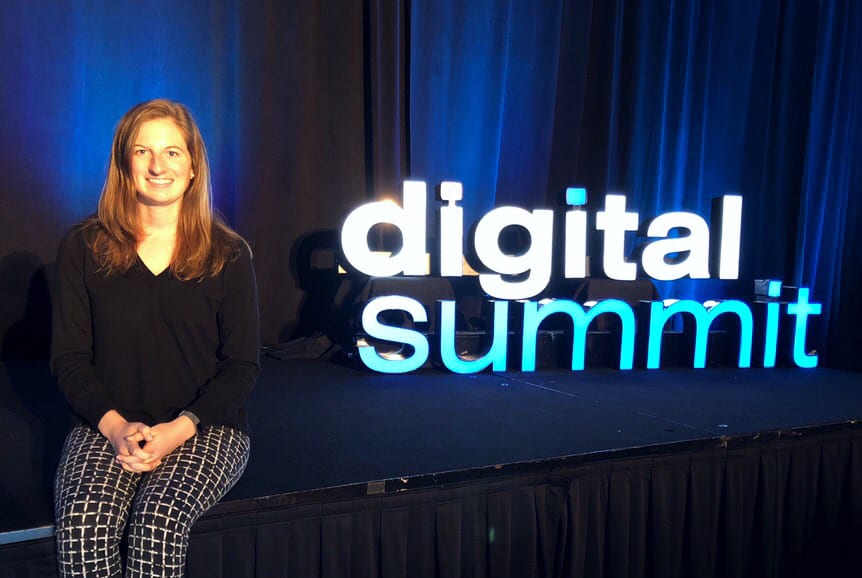We look forward to attending the Digital Summit, which comes to DC each year, to draw inspiration from industry leaders and peers as we approach Q4 and head into a lot of planning for the new year. Speakers this year spanned from top social media execs to Randi Zuckerberg (who loves to remind us that she actually graduated from Harvard, unlike her brother, Mark).
The overarching theme of this year’s Summit was brand image and how brands can engage with consumers. Our challenge today isn’t difficulty reaching consumers, it’s how to avoid bad experiences with the consumers we are trying to reach. As marketers, we can avoid these bad experiences by helping companies to clearly define their “personal brand” and how it can be leveraged to deliver an experience that gives consumers what they want.

What Exactly Are Consumers Looking For?
Leigh George of Freedom identified six marketing trends for brands that matter in 2019 and how brands can leverage them:
- Value-Driven Brands:
Companies should be helping consumers connect with their passions, not the other way around. (Ex: a sustainable homes company created ZeroBnB, a resource for users of AirBnb to find a list of sustainable homes to book on the site due to a lack of a sustainable homes filter directly on the AirBnb website. - On-Demand Brands:
Consumers expect brands to be where they are. - Brand Besties:
IRL, consumers seek experiences that they can’t get anywhere else, so brands should explore building partnerships with other brands that have similar audiences. (Ex: Nordstrom is teaming up with Casper and other digitally native brands to create pop-ups in their department stores.) - Brand Transparency:
It is no secret that consumers overwhelmingly value personalization, but also want their data protected and private. Brands can capitalize on this and by being more transparent in how they market and develop products and identify areas where the company can share data and a behind-the-scenes look with consumers to gain and expand trust. (Ex: a French grocery store is using Snapchat to show the journey of them catching the fish they sell and how it gets to their stores to buy.) - Brand Benefits:
Consumers expect more “beyond the transaction” compassion from brands. What post-purchase experiences could create more loyalty and advocacy among your customers? - Brand Communities:
Living in such a digitally forward world can create feelings of isolation, so brands need to find a way to bring together their communities via online or brick and mortar. (Ex: During the holiday season a prominent international airline used digital translators at airport terminals so people could converse with others who speak a different language.)
Identifying Your Personal Brand:
Randi Zuckerberg of Zuckerberg Media inspired the crowd by emphasizing the need to identify your own personal brand to help you get noticed. She isn’t Mark Zuckerberg’s sister, she is a “Professional Mom to Entrepreneurs” (and wannabe singer). Brand executives should identify their personal brand and lean in it to elevate their visibility.
How do you develop your personal brand? It’s a simple as asking yourself two simple questions:
- What are your 3 most valuable traits?
- What are your 3 most valuable skills?
Stir those answers together and out pops your personal brand! It is important to remember, however, that your personal brand CAN and WILL evolve over time as we are always re-defining our self-images. Your personal brand SHOULD be clearly defined.
Leveraging Your Personal Brand:
So, what do you do with this personal brand to get noticed?
- Think about the medium in which you shine the brightest on or, in other words, the mode in which you come to life (i.e., audio/video/long-form blog post).
- Pitching is your biggest time to shine!
- Use creativity to stand out.
- Surround yourself with other strong personal brands that leverage medium, media and data.
Carlos Gil of Gil Media Co. emphasized the importance of defining your personal brand by being human, real and relatable. Marketers and companies should be humanizing their brands and thinking more like the customer and less like a brand a few different ways:
- Sell less, engage more – take it as far as you can, even going to competitors’ pages and engaging with fans who have left negative reviews to drive awareness.
- Community is NOW king, NOT content. – get your loyal fanbase to be advocates of your product instead of the brand selling to them.
- Become content creators – original content keeps users on the platform and is algorithm-prioritized over branded content. Key moments such as the Shiggy Challenge are good times to capitalize.
- Speak with an authentic voice, ya know, like your customers!



